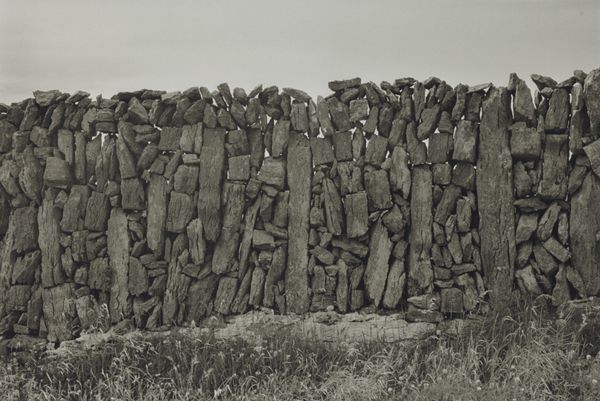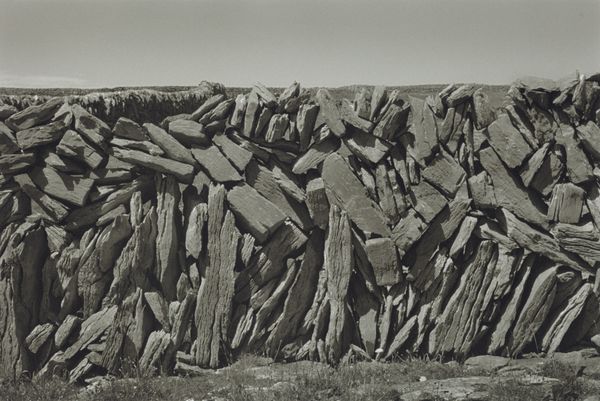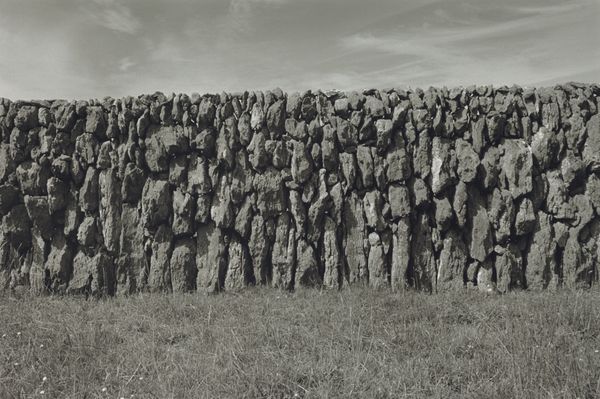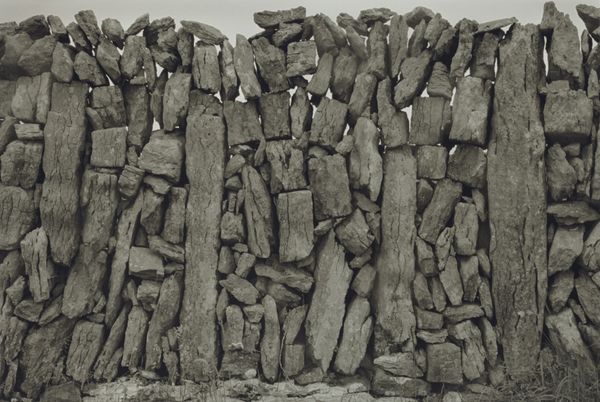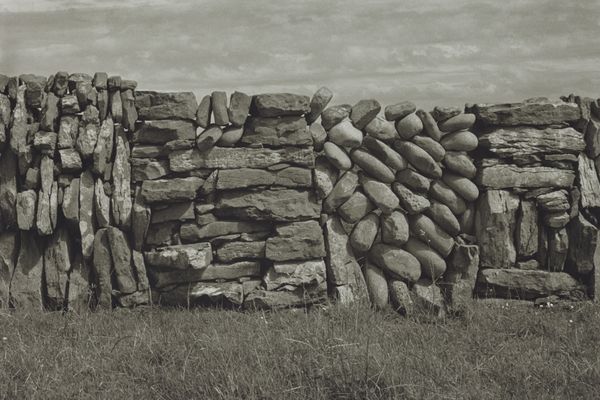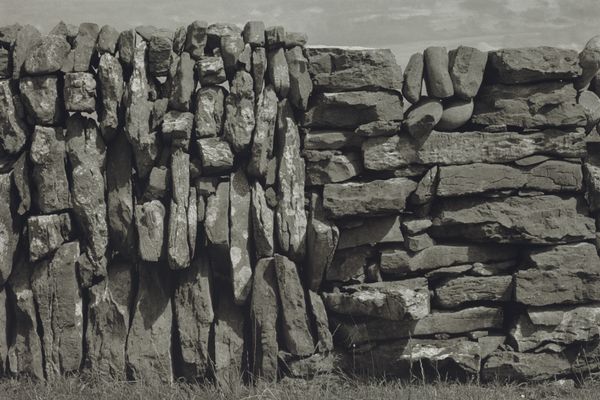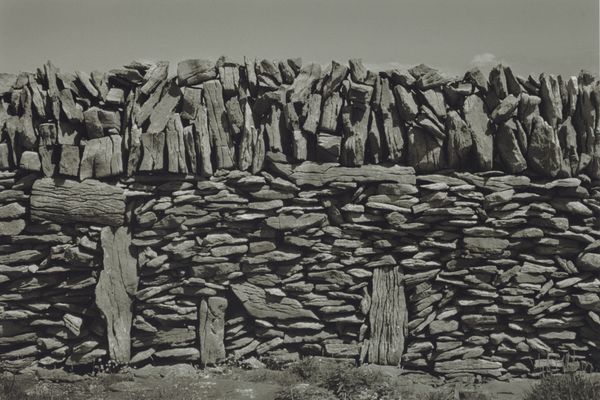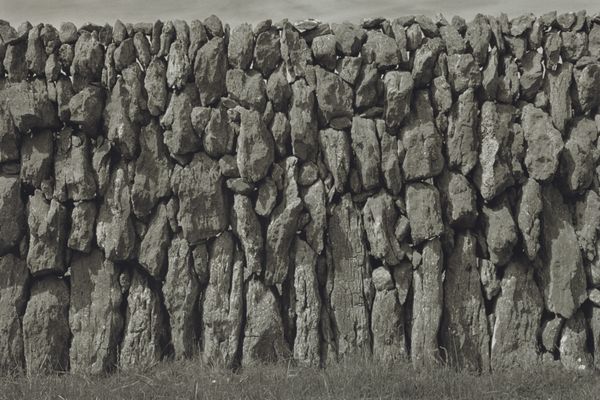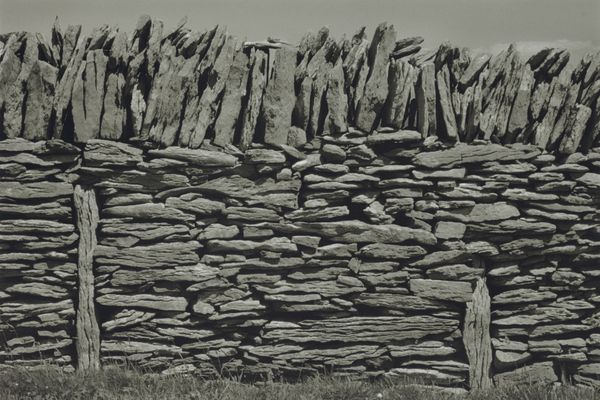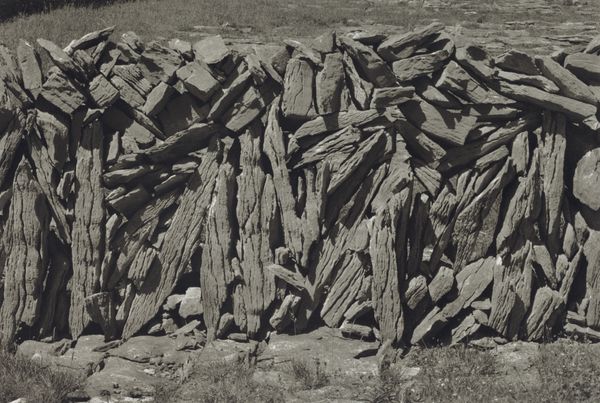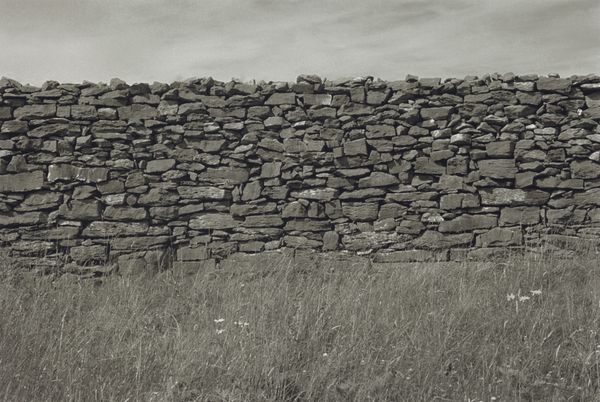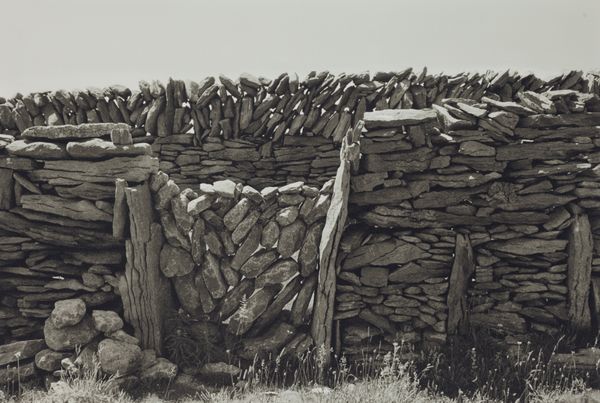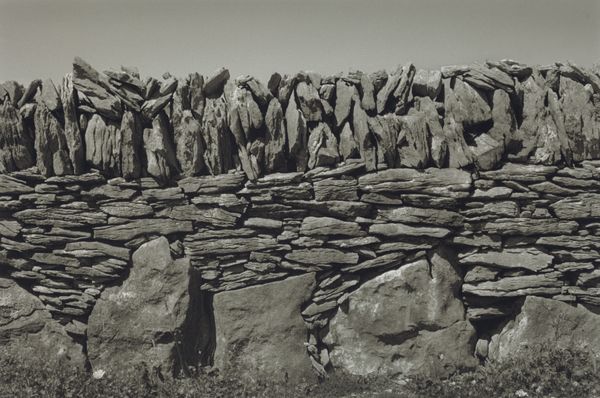
photography, gelatin-silver-print
#
black and white photography
#
landscape
#
black and white format
#
photography
#
geometric
#
black and white
#
gelatin-silver-print
#
monochrome photography
#
monochrome
#
realism
#
monochrome
Dimensions: image: 34.93 x 48.26 cm (13 3/4 x 19 in.) sheet: 40.64 x 50.8 cm (16 x 20 in.)
Copyright: National Gallery of Art: CC0 1.0
Editor: Here we have Sean Scully's "Aran," a 2005 gelatin-silver print. It's striking how such a seemingly simple composition – a stone wall – can feel so monumental and even a little bit melancholy in its monochrome palette. How do you interpret this work? Curator: Well, beyond the initial aesthetic impression, I think it's important to consider the wall itself as a symbol. Walls can represent division, exclusion, the separation of people from the land, but here, they also speak of labor, of human intervention on the landscape, the sheer persistence of this construction over time. Knowing this photograph comes from the Aran Islands, do you think about how landscape intertwines with the lived experiences and resilience of island communities, particularly considering historical challenges like emigration, poverty, and cultural preservation? Editor: That's fascinating. I hadn't considered the historical implications tied to that kind of landscape. The wall almost becomes a document of the community's struggle and endurance. Curator: Exactly. The stones themselves, roughly hewn and fitted together, echo the fragmented narratives of a place marked by both beauty and hardship. Does this make you consider how gendered experiences are also invisibly embedded here within these island and working class communities, potentially speaking to the labour of generations gone? Editor: I do wonder about that now. This wall embodies physical labour; it hints at stories of survival and identity formation within these quite specific historical and geographical contexts. It's much more charged than I initially realized! Curator: And in the simplicity of the image, the absence of overt narrative, that is precisely where its strength lies, prompting us to ask those vital questions about place, people, and power. Editor: It definitely encourages a deeper engagement and a more thoughtful appreciation of its socio-historical implications. Thanks, that gives me so much more to think about.
Comments
No comments
Be the first to comment and join the conversation on the ultimate creative platform.
